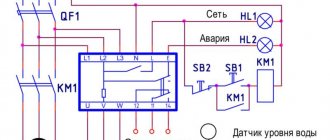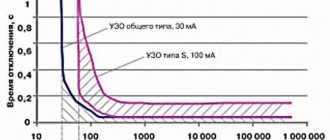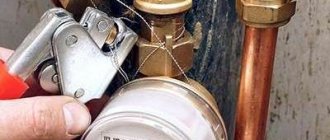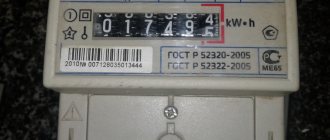An accurate count of the electricity used by consumers is carried out using a device that records and records consumption. Over time, the electrical flow meter fails or becomes obsolete. And then the homeowner is faced with a situation where replacing the electric meter becomes inevitable.
We will talk about the legal and technical nuances associated with the installation of a new metering device. Together with you, we will figure out in what order the old device should be replaced. We will advise you on what to do if you decide to do the replacement yourself.
Reasons for replacing the meter
The reasons why such a replacement may be required may vary. But they are divided into two groups:
At the initiative of the organization providing energy supply. For example, replacement based on the results of a scheduled inspection due to the expiration of the service life or malfunction of the device, planned re-equipment with more modern accounting systems.
At the initiative of the electricity consumer. Here the reasons can be either forced: expiration of the service life, device malfunction, violation of verification deadlines, broken seals, or caused by the desires of the consumer: transition to two-tariff metering, increasing metering accuracy, desire to install a meter that can withstand a large load.
Installation safety rules
When replacing an indoor electricity meter, the following rules must be observed:
- Do not leave exposed wires, which could cause a short circuit and electric shock to a person.
- Twisting of wires is not permitted. All of them must be connected in the distribution board through terminal boxes. The wires must be carefully laid and connected with dielectric bundles into a bundle.
- You need to turn on the meter when the circuit breaker after the meter is turned off, that is, without load.
- The metal structure where the device is installed must be grounded.
- After turning on the machine, the “Network” indicator should light up. The “Reverse” icons, etc. should not be lit, otherwise the connection is incorrect.
- When the outgoing machine is turned off, the LED recording the electricity consumption should not blink.
Expert opinion
Makhinov Vladimir Konstantinovich
Electrical Communications Specialist
The nature of the indication depends on the design of the electric meter and its type. Before starting work, carefully read the operating instructions.
Organizational issues of replacing an electric meter
If you discover a malfunction of your electric meter (see Introduction), you must notify the organization that provides you with energy supply services, also reporting the readings of the device.
As already noted, you can apply for a replacement for reasons not related to the failure of the meter.
In any case, you must write a statement to the organization to which you pay for electricity. When submitting an application, you need a passport and proof that you are the owner of the property. You may need to provide copies of these documents. If someone will submit the application on your behalf, they must have a power of attorney from you to perform this action.
The organization will send its appropriately qualified specialist to you, who will replace it and put the meter into operation, including sealing it and drawing up a corresponding replacement report. One copy of the act remains with the consumer.
It is necessary to carefully check the compliance of all data specified in the act with the actual readings of the meters and the passport data of the meters. It is also necessary to keep the passport of the new meter, since it indicates the date of verification of the device.
To install a new meter, you must purchase it yourself. You can purchase any model that is in the register of certified devices.
UPS for home: types, design and operating features- What is an intermediate relay: design, principle of operation, device and application ideas (115 photos)
Homemade 12 volt power supply: selection of components and simple circuits for creating with your own hands. 130 photos of homemade universal blocks
The meter must have state verification seals with the stamp of the verification organization and the verification date. In addition, no more than two years should pass from the manufacture of the meter to the date of its commissioning.
What laws should you follow?
Almost all answers to questions regarding the installation or replacement of metering devices can be found in the legislative framework. The regulations set out general provisions and more specific requirements relating to the private sector, municipal housing and privatized apartments.
For example, you can learn about the need to replace faulty equipment from the following documents:
- Federal Law No. 28-F3 of 1996, but edited on December 30, 2008;
- Law of the Russian Federation No. 4871-1 of 1993, as amended on January 10, 2003;
- GOST R 52321-2005 – requirements for class 0.5 meters; 1; 2.
Who is responsible for the property is specified in Art. 210 of the Civil Code of the Russian Federation, and about the obligations of the buyer of technical equipment - in Art. 543 Civil Code of the Russian Federation.
If disputes arise between you and representatives of the management company or neighbors about the use of metering devices and responsibility for them, we recommend that you contact a lawyer for clarification.
In Federal Law N 102-FZ of June 26, 2008, you can find materials on the uniformity of measurements, metrological examination and metrological services.
And Russian Government Decree No. 491 talks about who and when should be responsible for installing or replacing accounting systems, including meters.
But there are exceptions to the rules set out in the documents. For example, if a private individual expresses a desire to replace an old, serviceable electric meter in a floor panel with a new model, the cost of replacement falls entirely on his shoulders. However, further maintenance continues to be performed by the management company.
Replacing the meter yourself
The meter is sealed free of charge, and installation work is paid for. Their cost varies in different organizations, but is 1500-3000 rubles. Therefore, if you want to save money, you can replace the meter yourself. In this case, you must obtain permission for this from the energy supply organization.
If replacement requires removing seals, this can only be done by an authorized representative of the electricity supply organization.
The old sealed meter must be submitted to the energy supply organization.
After replacing the meter, a specialist from the energy supply organization must check the installation, seal the meter and draw up a commissioning report. One copy of the act remains with the consumer. Carefully check the data specified in the commissioning certificate and in the device passport, as well as the device readings.
Reinforcing shears (bolt cutters): types, characteristics, main differencesHow a voltage control relay works: the principle of operation of the protection and the nuances of connecting a control relay for a house or apartment
What is a pulse relay: principle of operation, types, description of devices and connection diagrams. 155 photos of pulse-type relays and video installation instructions
According to our legislation, no more than 30 days should pass from the installation of a new meter to sealing.
But from the moment of installation, electricity is paid according to the established ones, which is usually more expensive than by meter. Therefore, the consumer is not interested in delaying this process.
How to change it yourself
If you decide to install a new meter yourself, notification to the sales company is carried out in the same way.
After dismantling the old device, you can begin installation, taking into account the following recommendations:
The installation height is regulated within 0.8÷1.7 m from ground level; depending on the model of devices, they must be installed in special housings, common electrical panels or boxes.- Only electricians who have permission to perform work on lines with voltages up to 1000 V have the right to perform this type of work.
- You need to purchase and install meters that have state certification. Not all device manufacturers have such a document, since it is difficult to obtain. Before purchasing an electric meter, ask representatives of energy companies for a list of certified manufacturers.
- To service 380 Volt power networks, you will need to purchase a three-phase device.
- If you want to install two meters, you will need to obtain permission from the supplier. Typically, this method of paying for electricity is not approved. A similar permit will have to be obtained if there is a desire to install an additional meter in a communal apartment.
- In dilapidated houses or other similar buildings, meters can only be installed on a solid foundation. It must be provided in advance, otherwise the specialist may refuse to install the device due to the risk of fire or electric shock.
After self-installation, you will need to install a seal on the new device. Please note that only official representatives of energy companies have the right to register and seal meters; they will have to be called in any case. Practice shows that they often react negatively to the fact that their additional income is taken away from them, and can put forward various justifications for refusing registration and sealing. Therefore, it is better to agree on this issue in advance.
Installation of single-phase
Most modern meters are produced in a universal installation option, that is, they are mounted on special mounting rails in boxes without the use of hardware. The boxes have DIN rails - modular elements on which protection, metering and distribution equipment is mounted. They can be mounted or built-in. There must be a zero bus for connecting all neutral wires of electrical wiring and equipment.
In the store, unpack the device and, in the presence of the seller, inspect the case for mechanical damage. Please note that there is a manufacturer's license, a state trustee seal and a Quality Control Department seal. If something is missing or damaged, you should not purchase such a meter, since you will never be able to officially register and seal it.
The seller must put a mark in the passport about the time of purchase and guarantees.
At the same time, purchase electrical automatic protection fittings; for this you need to know by what criteria it is selected.
Installation procedure:
- Box mounting. There are many different types of them, differing in the degree of sealing, reliability of anti-vandal protection, linear dimensions, body material, list of internal fillings. Choose the best option for yourself. Securely fix the housing to the surface. On the back wall of the boxes there are technological holes for fastening; depending on the material of the wall, use self-tapping screws, dowels or hanging hooks. The back cover can be accessed after removing the internal protective cover.
- Install a two-pole circuit breaker inside the box - the main protection of the meter from overload and ultra-high short circuit currents.
- The PUE rules require the mandatory presence of an RCD. If you need to change the nominal parameters of the automation, use a special adjusting screw with a scale of indicators. The screw is driven by an ordinary screwdriver. To secure the machine to the rail, there is a special latch on its rear wall.
- Secure the meter to the bus using the latch. The latches and bars have standard sizes, which increases their versatility.
- Install single-pole circuit breakers. Ideally, it is recommended to install them on each floor of the cottage, bathhouse, utility rooms, garage, and workshop. Sometimes hotel machines are connected to every powerful electrical appliance. This ensures maximum safety indoors.
- Before connecting the meter to the wiring, you need to remove the protective cover of the meter; there is a connection diagram on the back side. When you remove the meter cover, you will see four clamps: two for input and output phases and two for input and output zero.
- Prepare jumpers. It is better to trim them with a margin - it is never too late to reduce the length, but it is impossible to increase it. The length of the cleaned ends of the jumpers on the meter and machine sides should be different and it depends on the size of the clamps. Jumpers must not be inserted with force.
- Connect the power wires to the main circuit breaker, turn off the circuit breaker. Check with a tester that the machine operates correctly. Remember that the neutral wire should only be blue; for the phase wire, you can use wires of any color.
- Connect the phase output on the machine with a jumper to the phase input on the meter. Make sure that the wire insulation does not get under the clamps. First, tighten the upper bolt of the clamp, check the reliability of the fastening by pulling the wire: it should not wobble or pull out. Tighten the bottom bolt and repeat tightening both bolts several times. The connection must be as reliable as possible; after installing and sealing the cover, access to the contacts to correct errors will be impossible; you will have to call an electrician.
- Connect the zero jumper. Install a zero jumper from the machine to the meter. The insulation of jumpers should never touch; this applies to all wires, both phase and neutral.
- Connect the phase coming from the meter to the first single-pole circuit breaker. Make jumpers between the installed machines. Then connect the zero output from the meter with a wire to the zero bus of the box.
Finally, you can close the lid and call an employee to check, seal and register. After this, permission is issued to connect electrical consumers to the power supply. Next, the wiring is connected with a phase wire to each single-pole circuit breaker, and a zero wire to the zero busbar, and wiring is done throughout the buildings and premises.
How to connect three-phase
The connection algorithm is practically no different from the described circuit for single-phase meters. There are differences only between types of functioning.
The devices are designed for a current flow of no more than 100 A, the maximum power of all consumers is no more than 60 kW. Such meters are most often used for private buildings with a large number of different consumers. The connection is made through current transformers at the outlet of the meter. Their parameters are selected taking into account the maximum power consumption.
Each phase has its own step-down current transformer; most often they are connected as a star; delta is rarely used. There are three terminals for each phase: for the supply wire of the current circuit, for the voltage wire and for the load wire of the current circuit.
Connection order:
- Connect the load wire . Loosen both screws of the single-phase power wire terminal, strip off the insulation, and insert the wire into the terminal. Tighten the top bolt, then the bottom, check the security and repeat the clamp again. The stripped section of the wire must be smooth; do not cut it while stripping the insulation. Do not allow insulation to get into the terminal. Similarly, connect the remaining terminals in phases.
- Apply power to the meter . If everything is done correctly, the indicator on the front panel will light up. When a load is connected, the mechanism begins to rotate and its readings change. The readings are multiplied by the transformation ratio of the connected current transformers; the coefficients must be indicated in a special window on the connection block cover.
- Replace the block cover and secure it with screws . Now you can call a representative for inspection, sealing, registration and issuance of permission to use.
Financial issues of replacing an electric meter
And, of course, the consumer is interested in “who pays for the banquet”?
For homeowners, the answer is clear: he pays for everything. True, he decides which meter he wants to install and where (observing, of course, all electrical safety standards). Exceptions occur when the energy supply company enters into an agreement with the owners of private houses, where it assumes the responsibility for maintaining and servicing the meters. In this case, she will determine a location convenient for her electricians to install them. But, anyway, she will take money from you for this, one way or another.
If the apartment is your property and the meter is located on your territory, then it is your property and all costs of replacing it (the cost of the device and work) are borne by you.
If meters are installed on landings, then according to our legislation they belong to common property. In this case, the management company bears the costs (in cases where it is obliged to make a replacement), unless otherwise specified in the contract. Therefore, carefully study the contract with the management company.
If you live in a rented municipal apartment, then the meter is the property of the municipality. In this case, the replacement is made at his expense, unless the replacement is not caused by compelling reasons and is made at the request of the tenant. The tenant can also pay for a replacement if the meter fails due to his fault.
Preparation of documents
Checking the meter by an inspector
To carry out work, permission from the electricity supplier is required. Without approval, interference with the design is prohibited, even if the device was purchased with the owner’s money. A person who is far from electricity cannot make replacements on his own. Since the procedure for changing the meter is associated with the danger of electric shock, the work is carried out by a specialist with a certain clearance group.
Before changing the electricity meter in your apartment, you need to submit an application to the electricity supplier. It can be written by hand. Usually the office has a standard template for drawing up a document.
Within 10 days, the company submits an application to the state register. After receiving the decision, the applicant can obtain a certificate of permission. You can buy a new meter only with a certificate from a specialized store or directly from the supplier. The following documents will be required for registration:
- passport of a citizen of the Russian Federation;
- document of ownership of the premises where the replacement will be made;
- a copy of the payment document confirming payment for services;
- power of attorney if the applicant is not the owner of the home.
A request is submitted to replace the device. At the agreed time, the controller visits the applicant. The readings from the old device are recorded and the seal is removed. Further dismantling and installation is agreed in advance with the supplier.
Photo tips on how to replace an electric meter according to the rules
Did you like the article? Share

0
What will change in 2020
The new law on the intelligent electricity metering system will come into force on July 1, 2022.
The Ministry of Energy has developed a law on smart meters. It was officially adopted, signed by the president and published on the legal information portal. The innovation comes into force on July 1, 2022. Old devices are subject to mandatory replacement with intelligent metering systems (IMS).
Such devices will optimize light consumption. The issue of non-payment and unaccounted consumption of electricity is losing its urgency. Conscientious payers will not suffer from debtors. The distribution of unpaid electricity to apartments will cease to apply. The new devices will perform the following functions:
- accounting of energy used by an individual private house or a specific apartment;
- automatic transmission of readings to the electricity supplier;
- remote disconnection of a user for non-payment.
Payment and installation of devices at enterprises and private homes will be carried out by Rosseti PJSC. The electricity supplier assumes responsibility for the connection in apartment buildings. The introduction of smart metering systems will begin with new buildings and apartment buildings after major renovations.
Next, replace the el. the meter will be carried out after its failure or upon the arrival of the scheduled verification date. Consumers will not be responsible for the condition of the MIS. However, the costs of new devices will have to be reimbursed to citizens. Payment of the “debt” will be gradual, prices will be integrated into electricity tariffs. The installation of new devices will not be forced.
Stage 1 – Approval
Nothing can be changed without approval from network services, so the first steps should be the following:
- Contact the energy sales office, submit in person or send via mail an application for a replacement, indicating the address and reason for the replacement;
- Wait for an answer, check with the dispatcher about the electrician’s arrival time;
- Certify the malfunction of the device;
- Get permission to replace.
Read here! Anti-static bubble film
Important! If you notice a violation of the integrity of the seal, then immediately contact the control room, since concealing such a fact is punishable by administrative liability, court and a fine.











